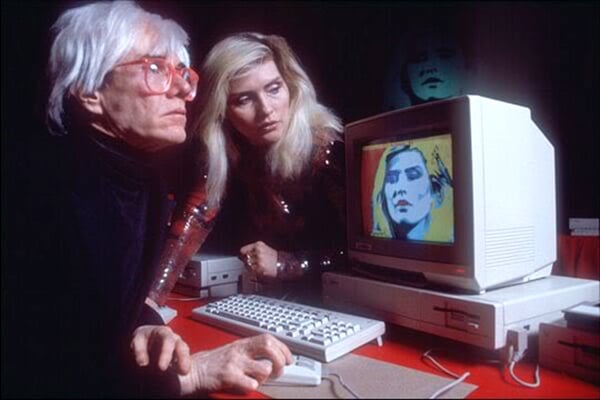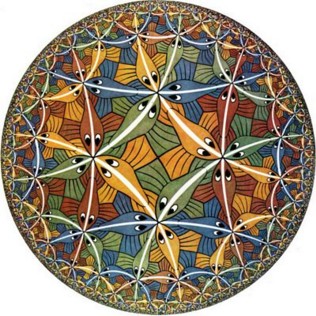The question
The best mathematics is driven by beauty as much as the finest paintings.
As the mathematician G.H. Hardy famously said “…there is no permanent place in this world for ugly mathematics.” In our quest to prove our theorems, mathematicians are guided by aesthetics as much as intellectual curiosity.

Mathematics models every aspect of the world around us. From Riemannian geometry modelling space-time, to big data uncovering new properties of social networks, to elliptic curves used to secure our banking systems, there are countless examples of how mathematics is a critical tool used in the sciences and engineering.
I spoke to some aerospace engineers recently, who said they want their students to learn more mathematics. They are doing rocket science, after all.

Framed within this discussion is the question of whether mathematics is a science, like physics or biology, or more of an art, more like poetry or sculpture.
Math as a science
Science is driven by observation. A physicist develops her models and techniques based on experiments. A scientist proposes a hypothesis, and then tests it via experiments.
A scientific theory, however, may precede experimental work. String theory, for example, is a physical theory with great promise to unify the forces of nature, but we haven’t found evidence of strings yet.

Mathematicians analyse patterns. They might use a computer to help discover them, or simply use pen and paper. Examples and counterexamples are extremely important in mathematics, and can help reveal a deeper theory.
An interesting example of this is what is now called the Ulam Spiral. The mathematician Stanislaw Ulam discovered this in 1963 by writing out the positive integers in a counter-clockwise spiral fashion, and then circling the primes:

If you make a large enough Ulam Spiral, like the one below with thousands of digits, non-random seeming patterns emerge.

We don’t understand the patterns in the Ulam Spiral. A conjecture of Hardy and Littlewood (Conjecture F) predicts that certain quadratic polynomials generate more primes than you would expect in a sample of random numbers. Conjecture F, if true, would explain some properties of the spiral.
In many ways mathematicians behave like scientists: we observe properties of patterns, and then search for tools to analyze or classify them. We don’t necessarily use any form of experimentation, which doesn’t support viewing mathematics as a science like chemistry.
Math as an art
An artist is driven by creativity expression and aesthetics. Artists focus on creating new objects from nothing. They use paint, words, sculpture, or any medium imaginable to create art.

Mathematicians are also intensely creative. They too make theorems from nothing, much like the way a writer writes a novel from a blank screen or paper. Our expressiveness is limited by our imagination. We may use geometry, analysis, or algebra, but we tell a story through our own mathematical language.
Beauty is so important to us when working on our theorems. Proofs, methods, and algorithms are routinely called elegant. We use beauty as a measuring stick to determine if a topic is worth pursuing. If we deem a theorem or its proof ugly, then we might not publish it, or search for a way around it for a better one.

A challenge with thinking of mathematics as an art is that it hard to appreciate it unless you have the proper training. Most people enjoy music, a good novel, or a well-crafted painting. It is more challenging to convince a friend to read a brilliant paper or sit through a lecture by a leading mathematician.
Believe me, I have tried!
A third path
My view is that mathematics is neither an art nor a science. A third path exists, nestled between the two, and intertwined with both. Mathematics is inherently different from other disciplines. While it is wildly creative, it is not art. While it can be used to model natural phenomena, it is not science. There are elements of both art and science in the field, but it isn’t a subset of either.

One point is clear. As art and science and evolve, mathematics will play an increasingly important role.
Mathematics, in the end, may be the only true bridge between art and science.
Anthony Bonato
[…] an engineering. It may have the same dilemma as mathematics – is it an art of a science, or something in between? An earlier post of mine dabbled in the notion that it is a craft, and the longer I am in this […]
LikeLike
So mathematics is language, it can be used to invent beautiful poetry and it can be used to describe mundane facts.
LikeLike
Like any other language. 🙂
LikeLike
both
LikeLike
Mathematics is a Language. You can write poetry using such language or a physics dissertation. Mathematics has some discoverability (like Number Theory) but most of it is contrived, invented to approximate certain ideas about reality. Probability, Calculus etc doesn’t exist in nature and if you don’t know (and you cant know) the true nature of space, all your geometry is out the window. Reality has some mathematical features in the plane of effects but is definitely not the language reality is made of (as Mathematicians tout endlessly).
LikeLiked by 1 person
[…] Science. Recently, I read an article describing exactly this issue of categorizing mathematics. In Is mathematics an art or science?, the author posits that math is neither an art nor a science and that it actually falls somewhere […]
LikeLike
[…] it is a way to find patterns in problems and using tried and tested models to solve them. It is both an art and a science. Mathematics gives us tools to solve problems much faster than we can ever imagine, it is also […]
LikeLike
[…] it is a way to find patterns in problems and using tried and tested models to solve them. It is both an art and a science. Mathematics gives us tools to solve problems much faster than we can ever imagine, it is also […]
LikeLike
[…] it is a way to find patterns in problems and using tried and tested models to solve them. It is both an art and a science. Mathematics gives us tools to solve problems much faster than we can ever imagine, it is also […]
LikeLike
Theoretical Mathematics is a recherché Art.
Theoretical Physics is a recherché Art.
Recherché Art is an act of thought and creation.
IOW: There are two types of artist a/o scientist; (1) Theoretical (2) Applied.
LikeLike
[…] us, from the infinitesimal to the infinite, they represent that cusp where one is flummoxed about mathematics being an art or a science… a flower to a cosmos, there is a sense on immortality that they exude, a never ending series of […]
LikeLike
Even science is art. Basically any human action beyond basic physiological ones is art. There is some natural sapiency, sapient talent, but as any skill – it needs to be developed for another advanced levels.
Art (from “art”, Greek τέχνη, techne, as a craft technique) is part of human culture, in the broadest sense a useful skill that is not mastered by everyone and which may need to be learned.
LikeLike
[…] Bonato, A. (2016, May 11). Is mathematics an art or science? The Intrepid Mathematician. https://anthonybonato.com/2016/05/11/is-mathematics-an-art-or-science/ […]
LikeLike